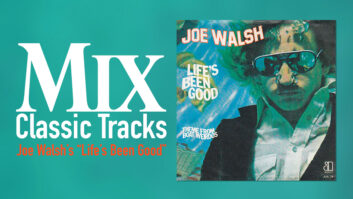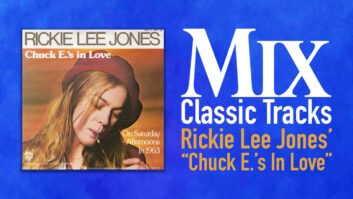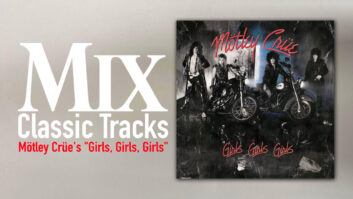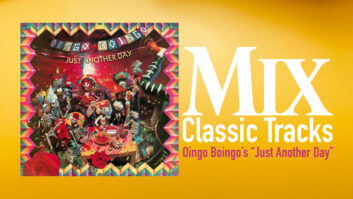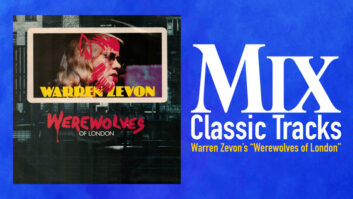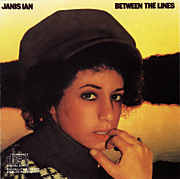

She scored her first hit, “Society’s Child,” in 1966. An earnest plea for the acceptance of interracial relationships that cleverly ends with the protagonist copping out and telling her to hit the road, Janis Ian was 15 when it was released. By 1975, she was an industry vet who knew a lot about the road, the studio and her mind. Producer Brooks Arthur had also carved out a place for himself in pop music’s history by that time through his engineering work on a string of Number One singles that stretched back to The Angels’ “My Boyfriend’s Back” and The McCoys’ trash-rock hit, “Hang on Sloopy.” Together, Ian and Arthur would team up on three albums, including the 1975 multi-Platinum smash Between the Lines, which featured the Number Three hit single “At Seventeen.” Ian, who carried home a Best Pop Vocal Performance Grammy for the single, and Arthur, who received a Best Engineered Recording Non-Classical Grammy for the album, cemented their positions in the pop pantheon with this record, which was tracked at the latter’s studio in Rockland County, N.Y.
An accomplished player with a feel for the nylon string guitar, Ian was also brutally honest with her pen. At a time when Jobim and other South American musicians — and those influenced by their style — were using the round tones of the classical guitar to evoke images of bronze babes and warm sand, Ian was ready to explore the underbelly of the bossa, the flip side of Ipanema: “I learned the truth at seventeen/That love was meant for beauty queens/And high school girls with clear skinned smiles/Who married young and then retired…And those of us with ravaged faces/Lacking in the social graces/Desperately remained at home/Inventing lovers on the phone/Who called to say come dance with me/And murmured vague obscenities/It isn’t all it seems at seventeen.” (©1975, Rude Girl Publishing)

Read more “Classic Tracks”
Buy the book
Gutsy writing for an artist who sings her own material, and not easy to perform for Ian, who closed her eyes while belting out “At Seventeen” for a long time after its release, fearing audience ridicule. Arthur, who for the past 11 years has produced multi-Platinum and Gold comedy/music albums for Adam Sandler, recalls his work with Ian vividly.
“I engineered ‘Society’s Child,’ he says, “and Janis and I became very good friends. But we fell out of touch for a while. The next time we met, she had all these goodies that would become the album Stars, the first one that we did together at 914, the studio I had put together in Blauvelt, New York.” (Eds. note: The virtually unknown Bruce Springsteen would record “Born to Run” at 914 several years later.)
Arthur and Ian honed their working relationship on Stars and were in full stride when they began production on Between the Lines. “Janis was an arranger and a performer [she wrote the flugelhorn/trombonium duet that softens up the single], she was very studio-aware and studio-conscious, and she loved to learn. However, the control room was more my domain.
“I loved ‘At Seventeen’ all the time we were working on it, but I never considered it a single; I thought ‘When the Party’s Over’ might be the single. But I’ll never forget the day a friend of mine, Alan Steckler, walked into the studio before we sweetened ‘At Seventeen’ and immediately told us that the record sounded like a smash.”
Arthur remembers 914 as an early example of the true project studio. “I was living in Valley Cottage, which is close to Blauvelt, back in 1971, and I thought it would be a great idea to have a workshop where artists and producers could hang out for a week at a time, relax and build a record at affordable rates. New York City by-the-hour pricing was already getting expensive, and I envisioned a place where artists like Janis, Dusty Springfield and, later, Bruce would be able to roost for a while and create an album. We built a football field behind the studio and the great Blauvelt Diner was within walking distance. Bruce loved that place!
“A&R Studios and I went into partnership with Phil Ramone, Don Frey and Art Ward owning half and me the other half. We put a lot of care into that studio, which Hank Cattaneo — a true genius, in my view — built. The place had been a garage, so we double-bricked the area where the pull-up doors had been and created an air lock in the building. I loved the sound of the cement floor at A&R’s 112 West 48th Street studio and I was going for that kind of live sound, which we softened by adding a series of decorative absorbent panels.
“A guy named Neil Monsey, who had a company in Cincinnati called Suburban Sound Inc., built my board. We were already working with 16 tracks by this time, and the board had, if I remember correctly, 32 inputs and outputs with Melchoir EQ on all of them.
“We also had a pretty full microphone cabinet. I’d generally use an Altec saltshaker 633 on the snare — or a Sennheiser 421 if that wasn’t working — and AKG 451 capsules on the overhead mics. I’d also throw a 421 at the kick, and I loved the acoustic bass sound we’d get when we rolled up an AKG C60 tube mic in rubber and stuck it in the bridge of the instrument.
“The important thing was — and is — to have options for mics. I used Barcus Berry mics on Janis and James Taylor, but if the sound wasn’t working, I’d go to something else, maybe an ECM-50 Sony clip inside the sound hole. I loved [Neumann] U86s on strings, and I used them and U47s on Janis’ vocals — Bruce’s, as well. Depending on the song and the number of acoustic guitar players, I might use an 87 on one of the guitars and a pair on the piano.
“The remaining microphones included some of my favorites. I have about a dozen RCA 77s and 44s that I would use wherever I needed them: brass, guitars — amped and acoustic — and even vocals on occasion, if I needed to pull a deeper tone out of a singer. The king of vocal mics was my tube [Neumann] 47, though. Along with the 87s, that was my workhorse.
“We also had the very first Eventide digital delay line made and an Eventide Harmonizer, which I purchased directly from the New York AES show back in ’71 or ’72. Bruce loved those, and he had us use them everywhere. We tracked to both an Ampex 440 2-track and a 440 4-track machine, along with our Scully 16-track recorder, which was brilliant. We had two echo chambers, an EMT plate and an AKG BX-10, which had springs and sounded like a live chamber. We monitored through a pair of huge Altec speakers and a small pair of KLH bookshelf speakers that we referenced our mixes on.”
Given the luxury of tracking 16 wide, did Arthur record Ian’s “At Seventeen” vocals with the band or as an overdub? “As I recall, we had Janis sing along with her guitar and the rest of the instruments on the basic track, but after everyone was gone, we redid her entire vocal,” Arthur remembers. “She mystically fit her vocal into the ebb and flow of the track that had been cut, without straying too far from what she’d done the first time through.
“I felt that the track needed to grow as it developed, and so we added strings and just snuck them in when Janis sings ‘It was long ago and far away.’ The beautiful thing about that string part is that it’s barely present — you needed radar to find it. The three things that I loved most about the mix were the feel, Janis’ riveting vocal and those subtle strings.
“There’s one more surprise that I don’t think I’ve shared with anyone in all these years. Remember, we didn’t have automation back then. After we’d finished the mix at Columbia Records in Manhattan, Janis and I, and maybe her manager, Jean Powell, or our executive producer, Herb Gart [Rainbow Collection], felt that we needed to keep building the record after the strings were introduced. We already had a 2-track mix and we didn’t want to redo it, so we brought in a conga player; it might have been Ray Barretto or Jimmy Maelin — I can’t remember. We set up a pair of 2-track recorders and added the conga part onto the second machine, then spliced from that point on back onto the original!
“Speaking of those mix sessions,” he continues, “Russ Payne spent a few weeks working with us, but the album was largely mixed by me and my then assistant, Larry Alexander. Larry was a real find. He showed up at A&R one day looking for a gig and I just happened to run into him. Larry told me he lived near Nyack, which is very close to Blauvelt, and that he had studied engineering at the University of Buffalo. Working with Larry for the four or five years that I had at that studio was like having the greatest sidekick in the world. I felt like a spider with four arms. Larry was completely focused, worked very hard and the hours didn’t matter. He witnessed history, man, and helped create it.”
Between the Lines was the last project Arthur worked out of 914 Studios. With an eye on the West Coast and partners who were moving in different directions, he would pull up stakes and relocate to Los Angeles, where his streak of successful associations would continue to pile up. Arthur helped Peter Cetera develop his Karate Kid II hit, “Glory of Love,” established his partnership with Sandler (which led to their co-writing the animated feature Adam Sandler’s Eight Crazy Nights) and continues to ply his original crafts of singing and songwriting to this day.
Although the mature Ian found it hard to match the success she enjoyed as a precocious teenager and young adult, she continues to write, tour and actively campaign for the social causes that are important to her.

Click here to listen to a clip from Janis Ian’s groundbreaking song, “At Seventeen.”
Click here to visit Ian’s Website, which features The Making of a CD, a real-time walk-through of the creative process of her latest CD, Billie’s Bones.
